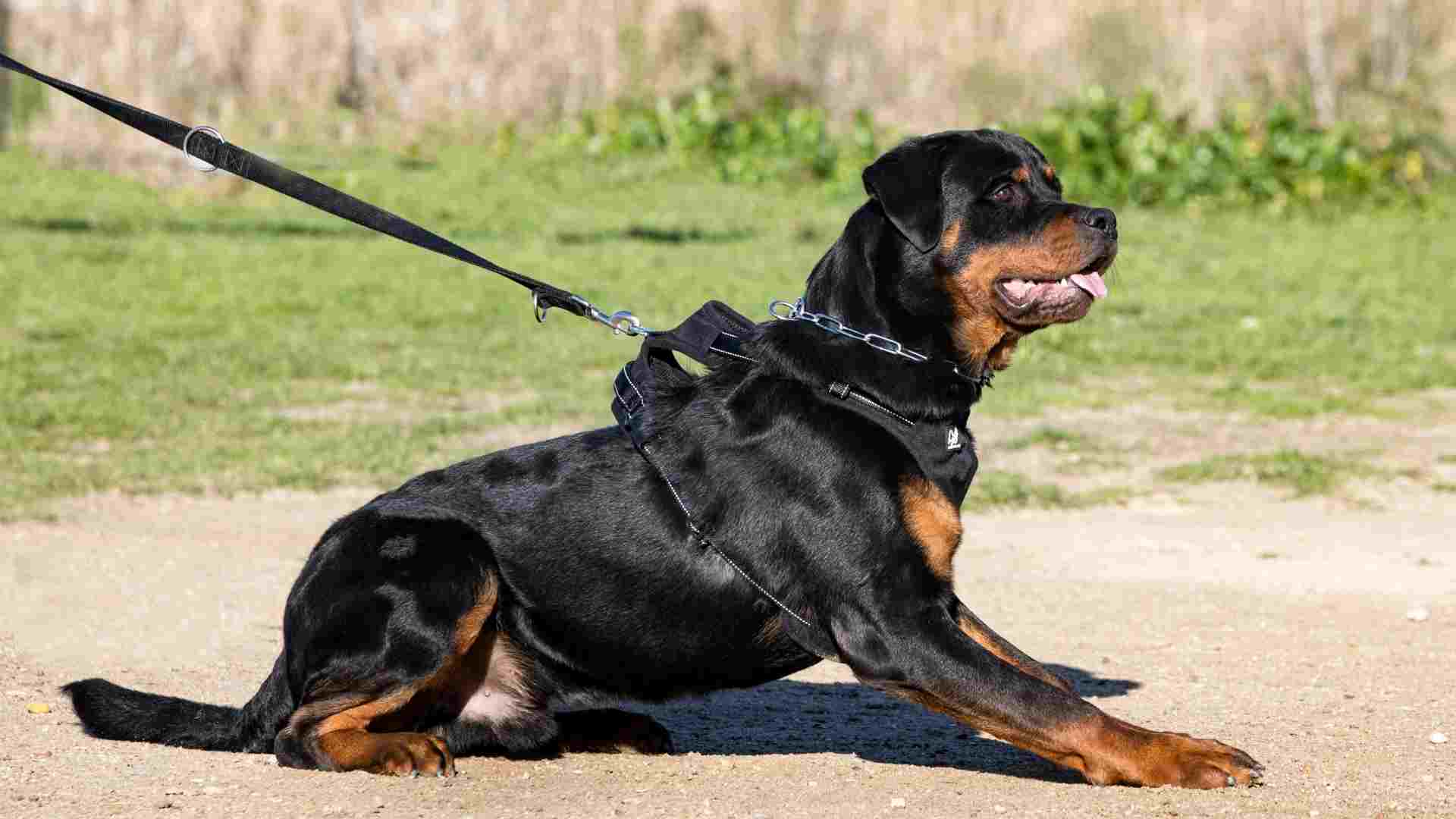Have you ever tried to negotiate with a dog? You throw the toy—they stare. You call them in—they roll on their back. You tell them to sit—and they walk away. Sound familiar?
If so, you may be living with a stubborn breed. These dogs don’t lack intelligence; most are very smart. They just have a different idea of who’s in charge. While some dogs aim to please, others prefer to pause, assess, and decide for themselves.
And when they decide no? Good luck. This personality can be challenging—but it also means they’re bold, curious, and full of attitude. They bring humor, energy, and sometimes a test of your patience.
In the article below, we’ll highlight the dog breeds that are famously strong-willed and share what makes them so headstrong. If you love a challenge wrapped in fur, these dogs might be exactly what you’re looking for.
Dog Breeds That Are Incredibly Stubborn
1. Rottweiler
Rottweilers have a calm but assertive way of interacting with commands. They often pause before acting, especially if they don’t see a clear reason to follow through. This behavior is shaped by their confidence and deep-rooted self-assurance.
Selective and Intentional Responses
Their reactions can be delayed even when they fully understand what’s expected. They prefer making their own decisions instead of responding automatically. This tendency becomes more noticeable in training without strong consistency or leadership.
Boldness Rooted in Their History
The breed’s background in herding and protection helped shape a dog that trusts its own judgment, as stated in the AKC. They often step back in unfamiliar settings to observe before engaging. That thoughtful hesitation is part of their natural instinct.
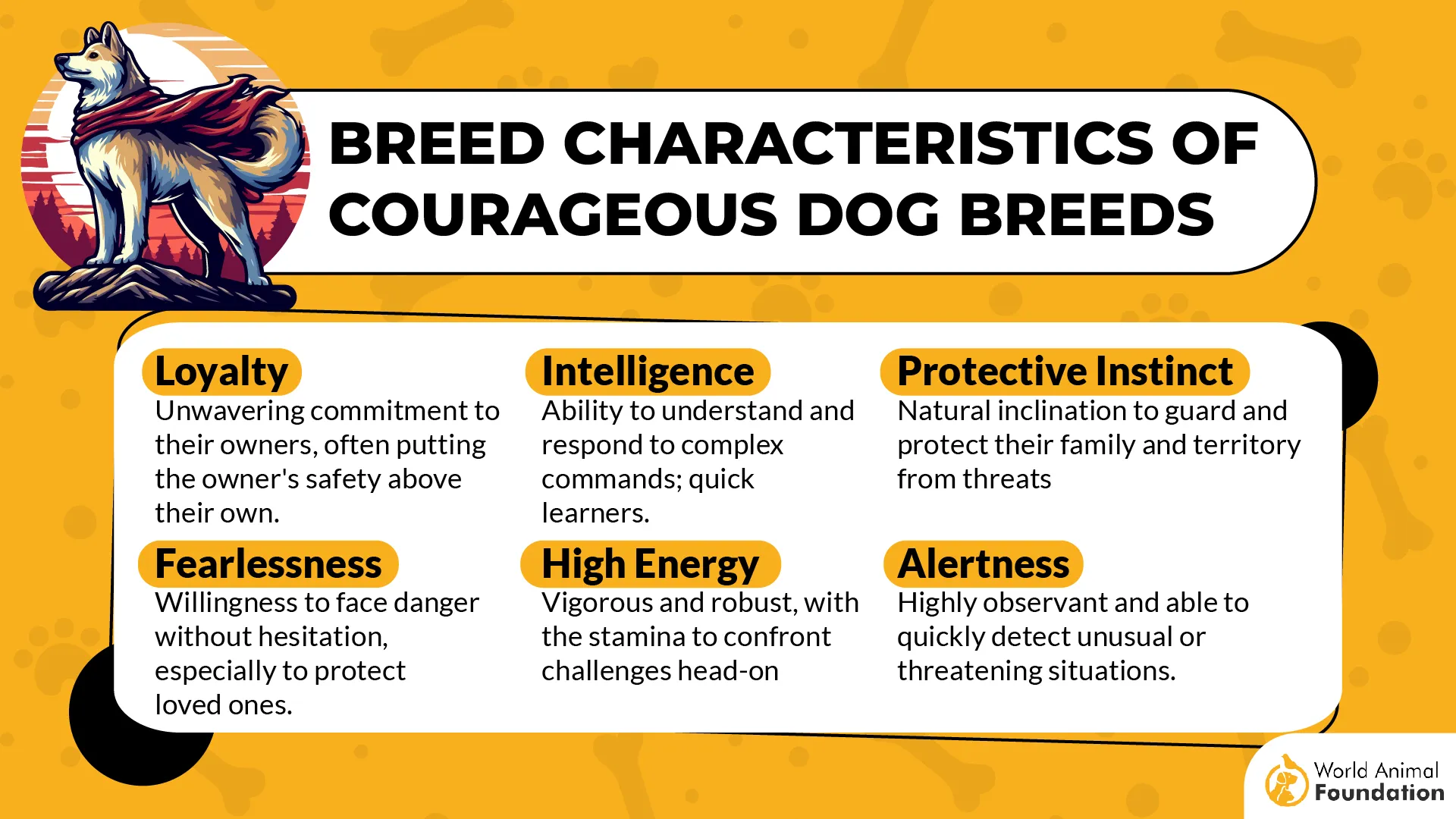
Reading Into a Dog’s Behavior
Rottweilers aren’t quick to surrender control in everyday routines. They need firm direction but also mutual respect to stay cooperative. Their independent nature makes them less predictable, especially for owners unfamiliar with structured training.
2. Jack Russell Terrier
Jack Russell Terriers are known for staying focused on what they want, no matter how small or silly the goal may seem. Once their attention locks in, redirecting it becomes a challenge. This mental persistence often looks like resistance during routine tasks.
Testing Boundaries Through Energy
Their endless stamina fuels their stubborn moments, especially when they’re asked to slow down or stay still. They often turn structured tasks into spontaneous games. Without enough physical and mental outlets, the refusal to cooperate becomes more frequent.
Deep Roots in Hunting Instincts
They were originally bred to chase foxes out of their dens with speed and confidence. That history gave them a bold mindset and strong independence. These instincts still shape how they interact with rules, especially when distracted by sights or scents.
A Challenge for First-Time Trainers
They often ignore repeated instructions during early training sessions, choosing action over repetition. These moments aren’t about defiance, but about a breed wired to act fast and think later. Their behavior is a textbook example of stubborn dog breeds in action.
3. Shiba Inu
The Shiba Inu is one of Japan’s oldest dog breeds, originally used for hunting small game in mountainous terrain. This long history of working independently shaped how they assess situations without needing constant guidance. That deep-rooted instinct still defines much of their behavior today.
Cool Demeanor with Selective Focus
Shibas aren’t naturally eager to please and rarely act just to gain approval. They often choose to follow their own pace, even during familiar routines. This quiet defiance is subtle but very noticeable in households that expect quick obedience.
A True Example of Independent Personality
They tend to challenge repetition, especially in training periods that lack novelty or purpose. Their independence shows up in moments where they disengage and walk away, even in the middle of a game. They aren’t ignoring you — they’ve simply lost interest.
A Reputation Among the Most Stubborn Pups
Trainers often place Shiba Inus high on the list of stubborn puppies for good reason. They display decision-making that aligns more with feline behavior than canine loyalty. Whether ignoring a leash or standing firm during walks, they choose their actions carefully and deliberately.
4. Siberian Husky
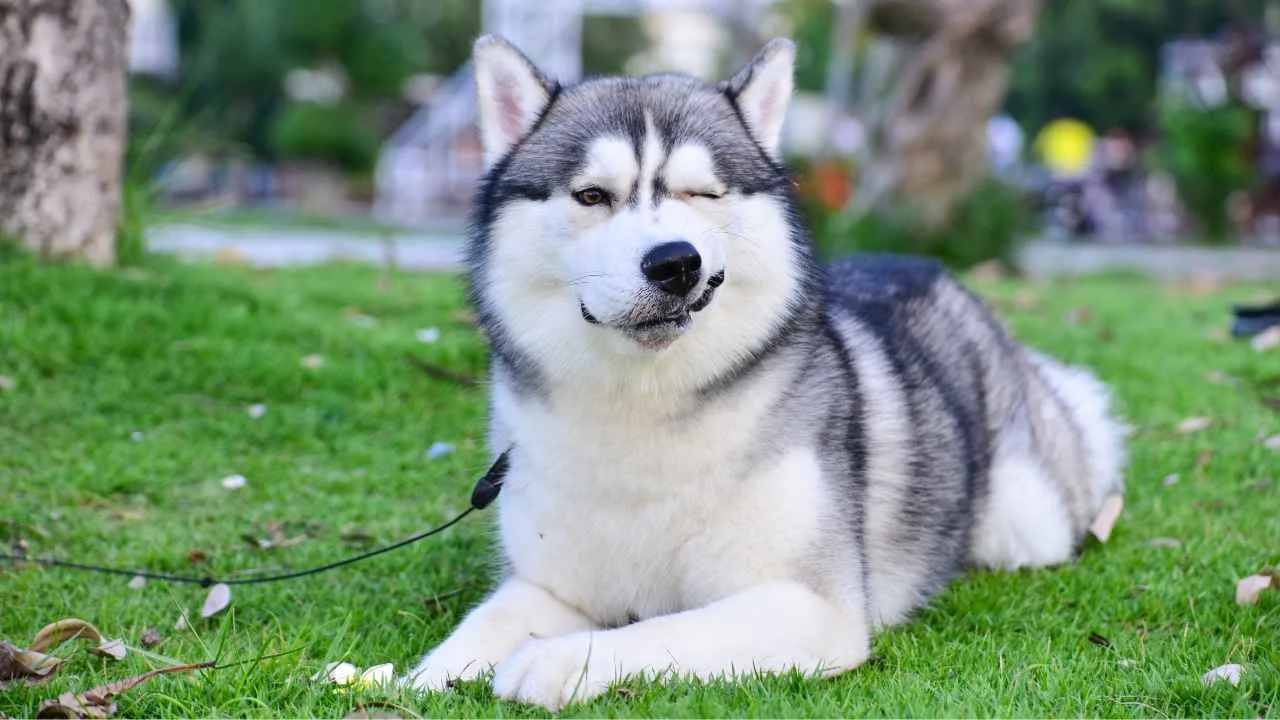
Siberian Huskies are intelligent but rarely eager to follow orders right away. They often weigh the situation themselves before reacting, especially if they feel bored. This self-directed mindset is one of their most defining traits during training.
Energy That Fuels Independence
Bred for endurance and teamwork, Huskies still carry an instinct to take the lead on their own terms, as mentioned in Petplan. Even simple instructions can be ignored if they’re in an energetic or distracted mood. That makes consistency crucial from an early stage.
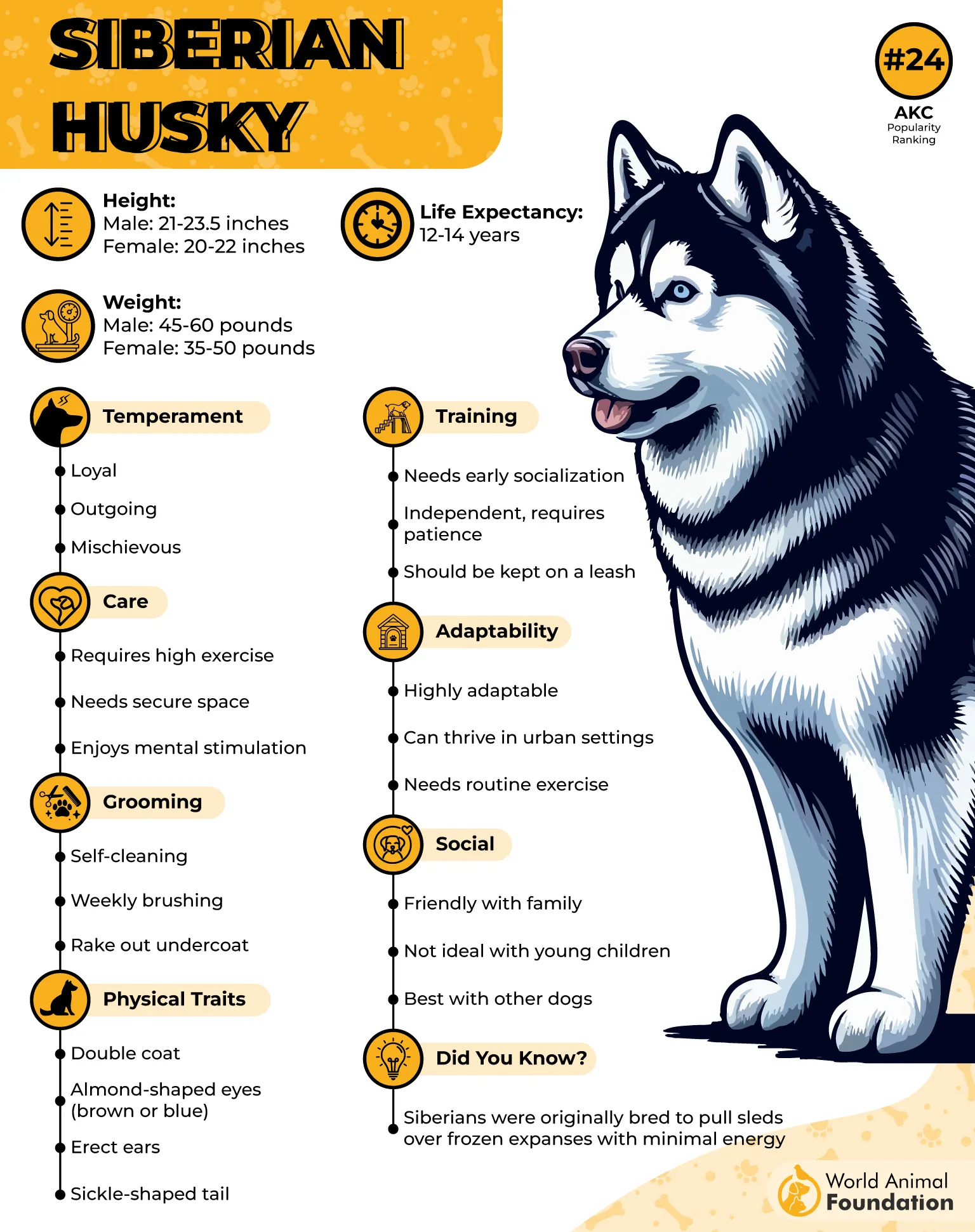
Stubbornness Starts at a Young Age
Many owners notice their willful streak forming at a young age, sometimes as early as puppyhood. If not addressed early, these habits can become harder to redirect later on. Their cleverness demands guidance before it becomes defiance.
When Professional Guidance Matters
A strong-willed temperament makes Huskies more responsive to structure when it comes from experience. Working with a professional trainer often helps establish boundaries more clearly. Without that, they tend to invent their own rules at home.
5. Afghan Hound
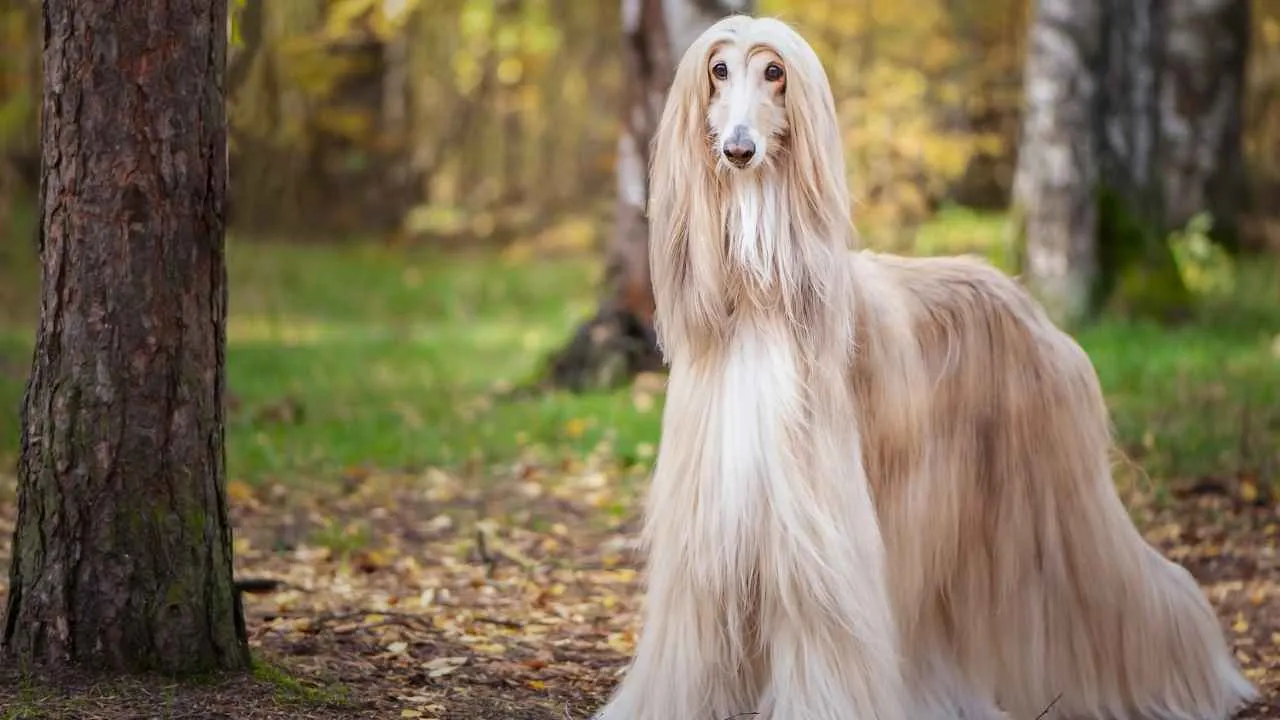
Afghan Hounds are known for their elegant presence, but behind that flowing coat is a breed that prefers to do things on its terms. They often seem detached during training and may wander off mid-session. Their stubbornness comes from a deep-rooted instinct for independence.
Selective Cooperation in Training
They respond best when training starts from an early age with a patient and flexible approach. Without this, they’re more likely to lose interest or disengage entirely. Afghan Hounds are quick learners but choose what to retain based on their mood and comfort.
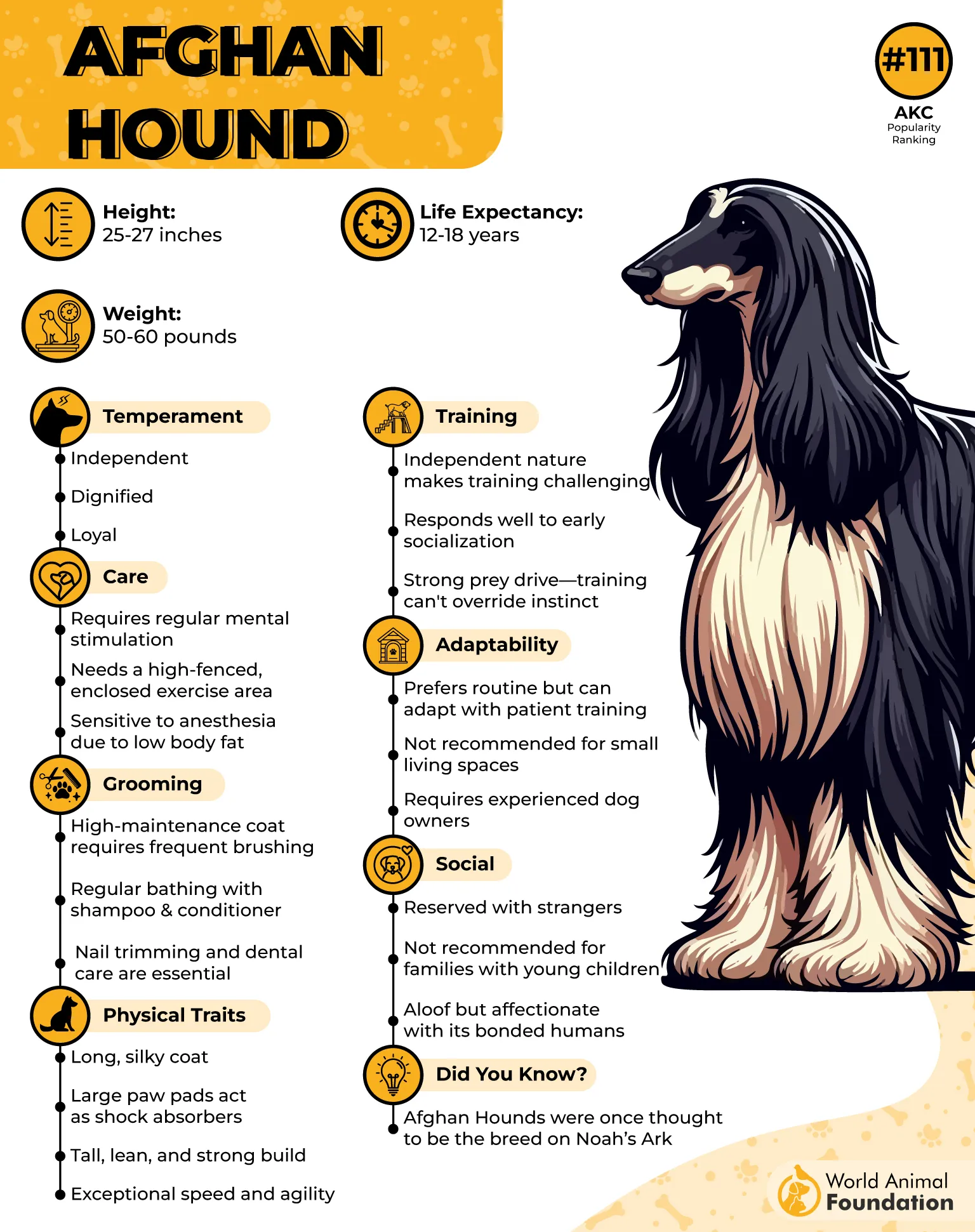
Bred to Think for Themselves
As ancient hunting and working dogs, they developed the ability to make quick decisions without human input. That instinct still shows today, especially when they assess situations on their own. They’re less likely to follow instructions without context or reason.
A Mind That Requires More Than Repetition
They become disinterested when training lacks variety or challenge. Consistent mental stimulation is important to keep them focused. When bored or unimpressed, they tend to ignore commands completely, no matter how well they know them.
6. Airedale Terrier
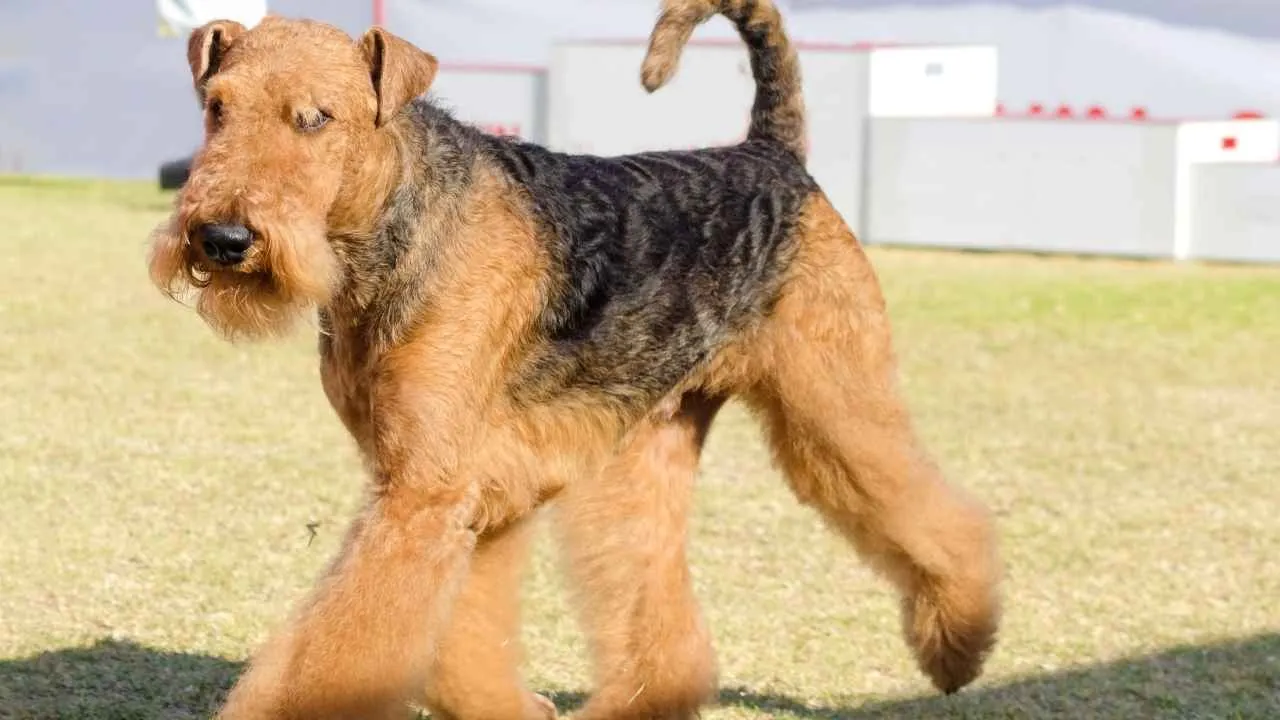
The Airedale is known for having a mind of its own, especially during training or unfamiliar routines. They often test limits just to observe the response. This kind of behavior reflects their bold nature and a long history of working independently.
Problem-Solver With Selective Focus
This breed often becomes absorbed in whatever grabs their attention first. Commands may take a back seat if there’s something more stimulating in their environment. That’s why training periods usually require timing, control, and a good deal of patience.
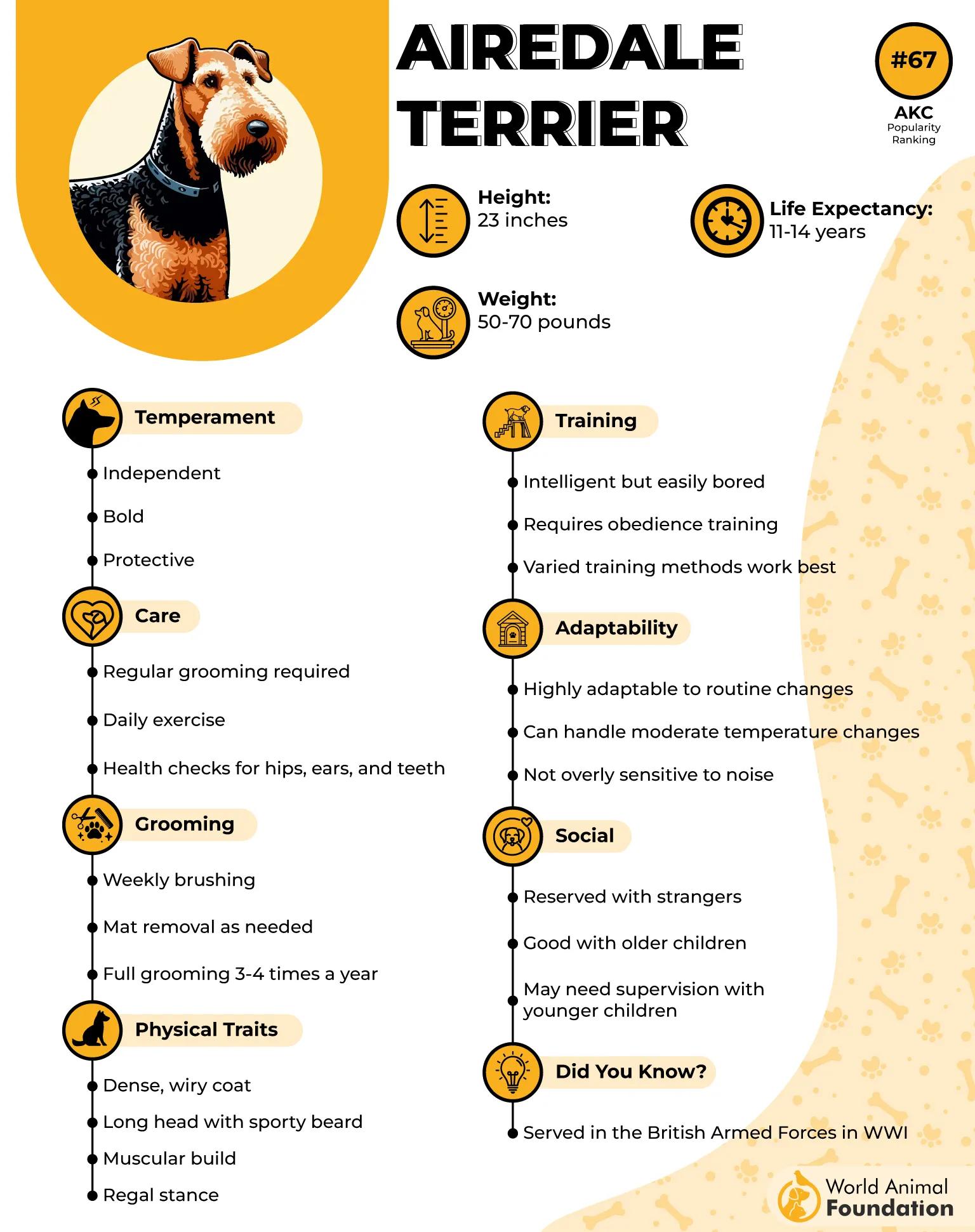
An Independent Streak That Runs Deep
Airedales don’t look for direction unless they see purpose in it. They make choices that reflect their natural curiosity and confidence. This independent streak becomes more obvious if there’s no mental challenge or structure in place.
When Guidance Needs Reinforcement
Their stubborn side often calls for more than basic obedience strategies. Owners unfamiliar with terrier behavior may find it helpful to seek professional help early on. Without clear leadership, routines can easily turn into stand-offs over simple tasks.
7. Beagle
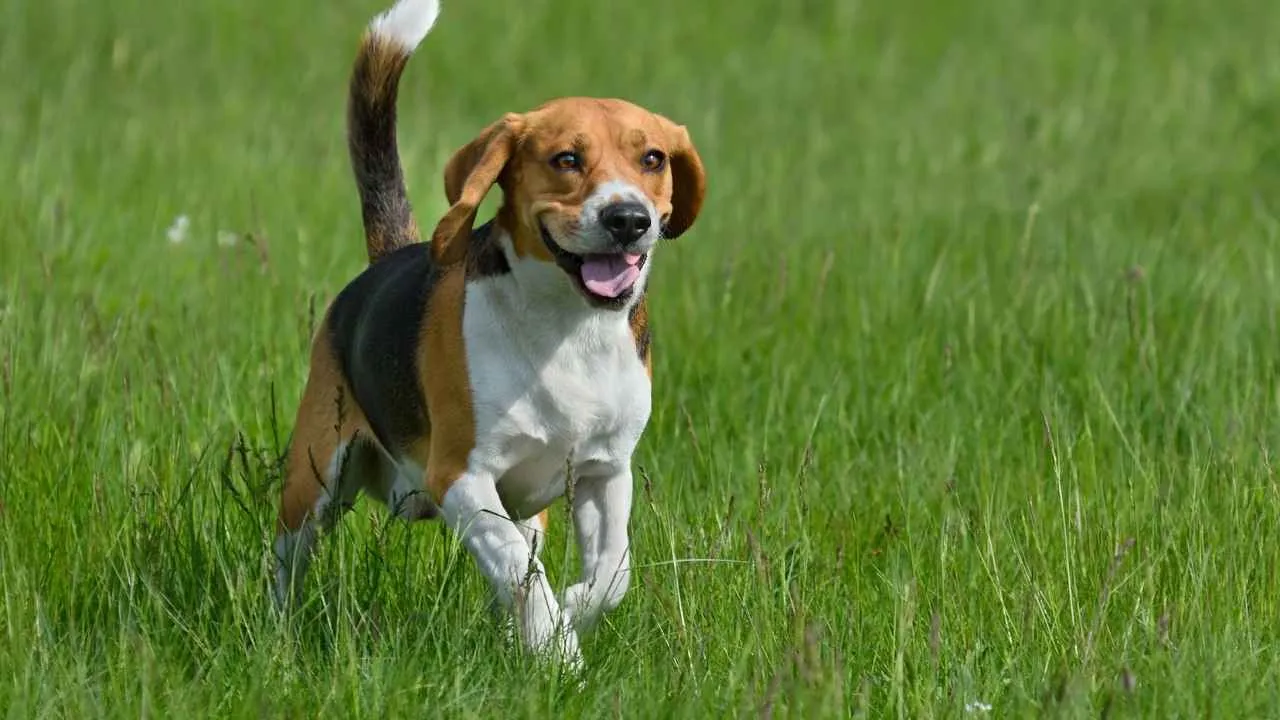
Beagles were bred to follow scents with full focus, and that drive often overrides commands. Their instincts guide their decisions, especially outdoors where distractions are everywhere. Once they catch a trail, it’s hard to redirect their attention without solid training.
Stubborn Streak Wrapped in Charm
They often act like they didn’t hear you, especially when asked to stop something fun. This isn’t a lack of understanding but a desire to continue what they started. Their stubbornness is consistent, especially when routines don’t interest them.
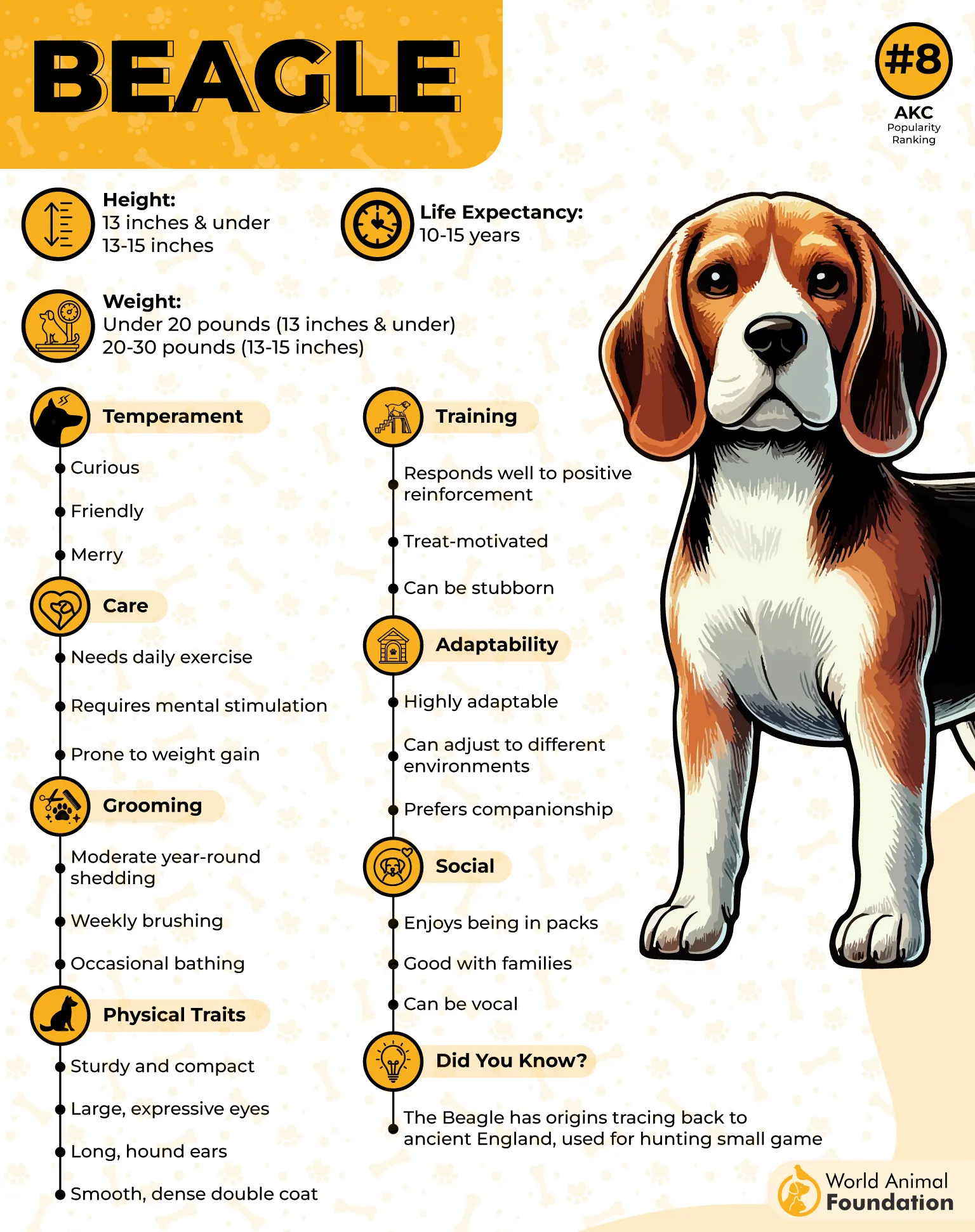
High Intelligence, Low Obedience Rate
Beagles rank high in scent-related tasks but lower in structured obedience. Their intelligence shows in problem-solving, like finding exits or reaching food. This ability makes them tricky to manage for owners expecting quick compliance.
Motivated by Movement and Curiosity
Beagles need regular exercise to stay focused and manageable during training, as per PetMD. Their curiosity around other animals, smells, or noises often pulls them off track. Without mental and physical outlets, their stubborn behavior tends to increase.
8. Basenji
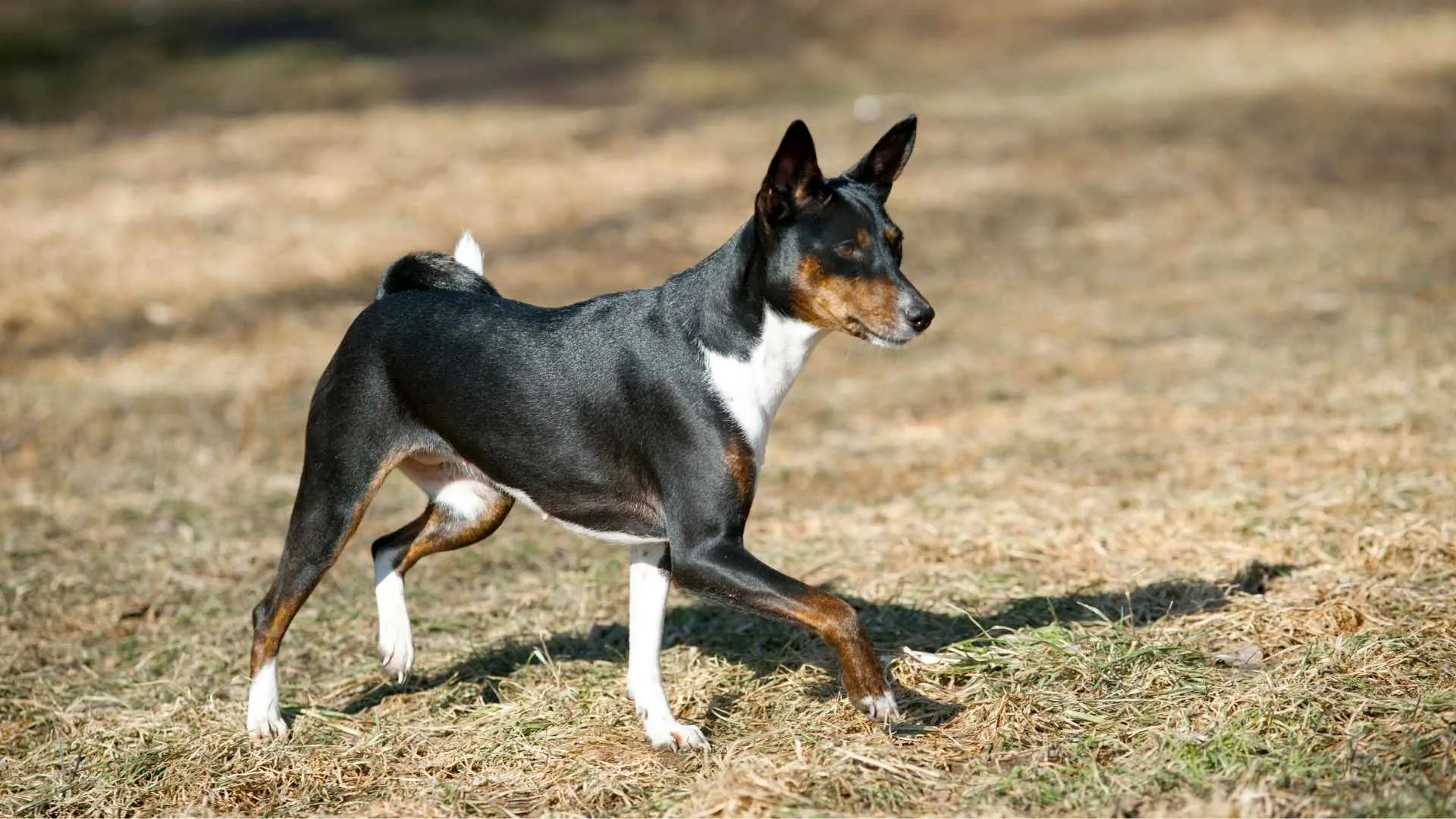
Basenjis often evaluate a command like a suggestion rather than a rule. They pause, weigh the situation, and choose whether to engage based on their mood. This careful filtering makes them one of the most independently minded breeds.
Low Tolerance for Repetition
Once they’ve grasped a task, they’re quick to lose interest in repeating it. Obedience sessions without variation usually end with the Basenji walking away. Their intelligence requires mental engagement rather than routine drills.
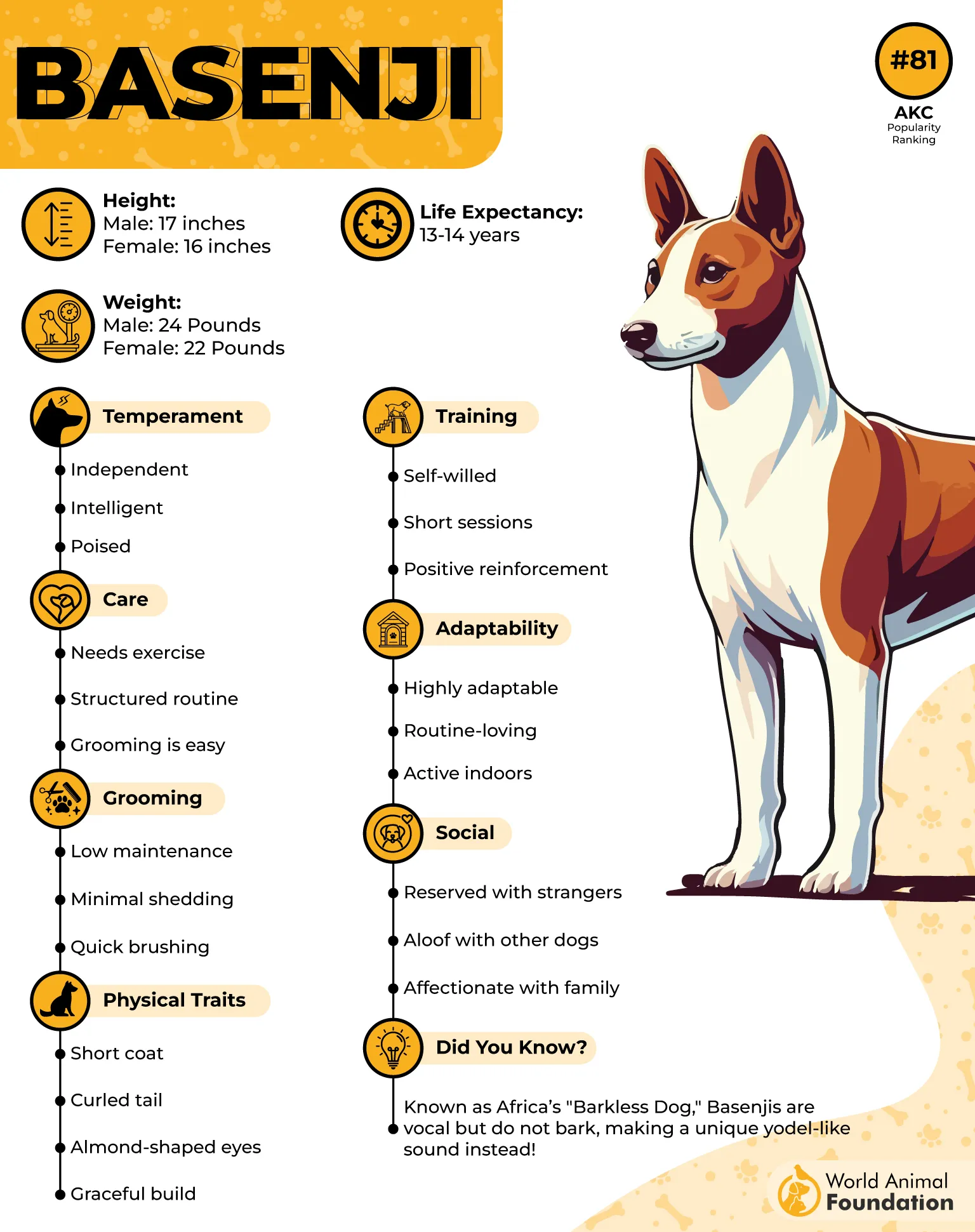
Alert but Selectively Responsive
They stay aware of their environment, picking up sounds and scents others miss. But attention doesn’t always translate into action. Basenjis can acknowledge commands without reacting, especially when distracted by more stimulating triggers.
Clear Signs of Independent Thinking
Basenjis thrive in environments that don’t overcontrol them. Their body language often shows a preference for doing things their own way, even during walks or social introductions. They naturally resist pressure and respond better to trust-driven interaction.
9. Bulldog
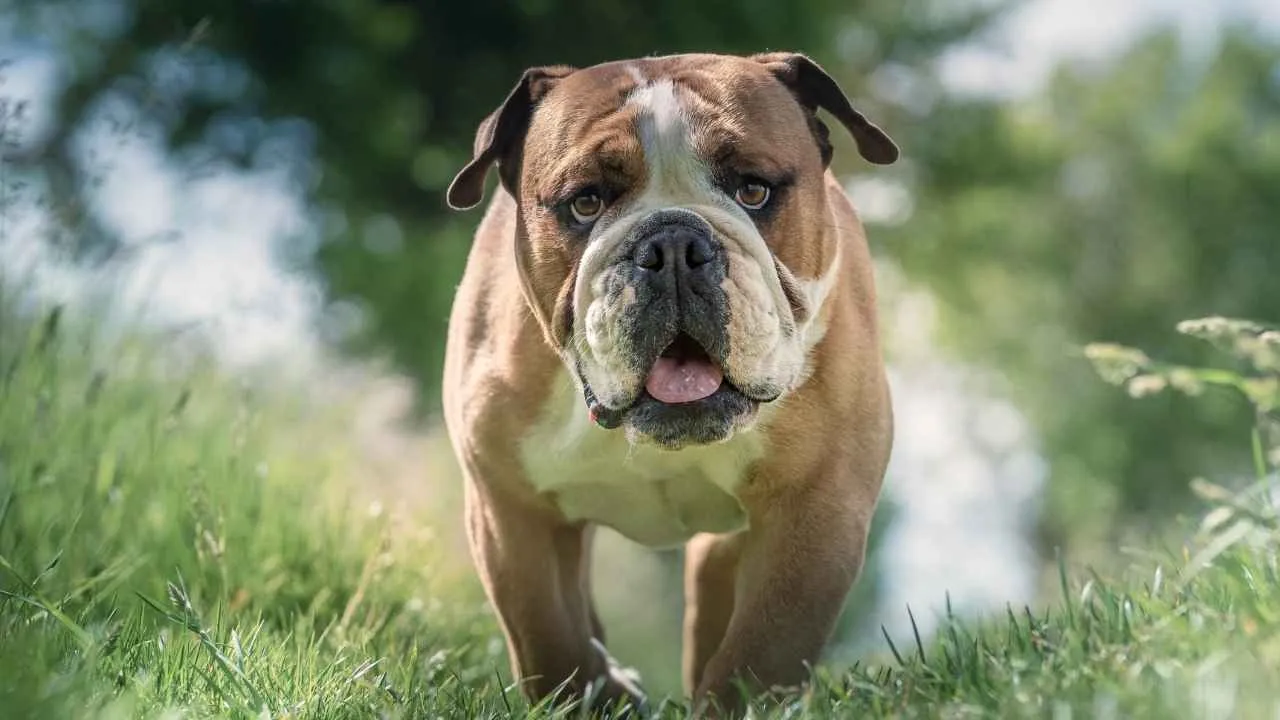
Did You Know: A Bulldog named “Handsome Dan” became the first official live mascot of Yale University in 1889.
Bulldogs have a strong tendency to dig in when asked to move or change direction. Their resistance often shows up during walks or any activity requiring extra energy. This isn’t a lack of understanding but a firm decision to do things at their pace.
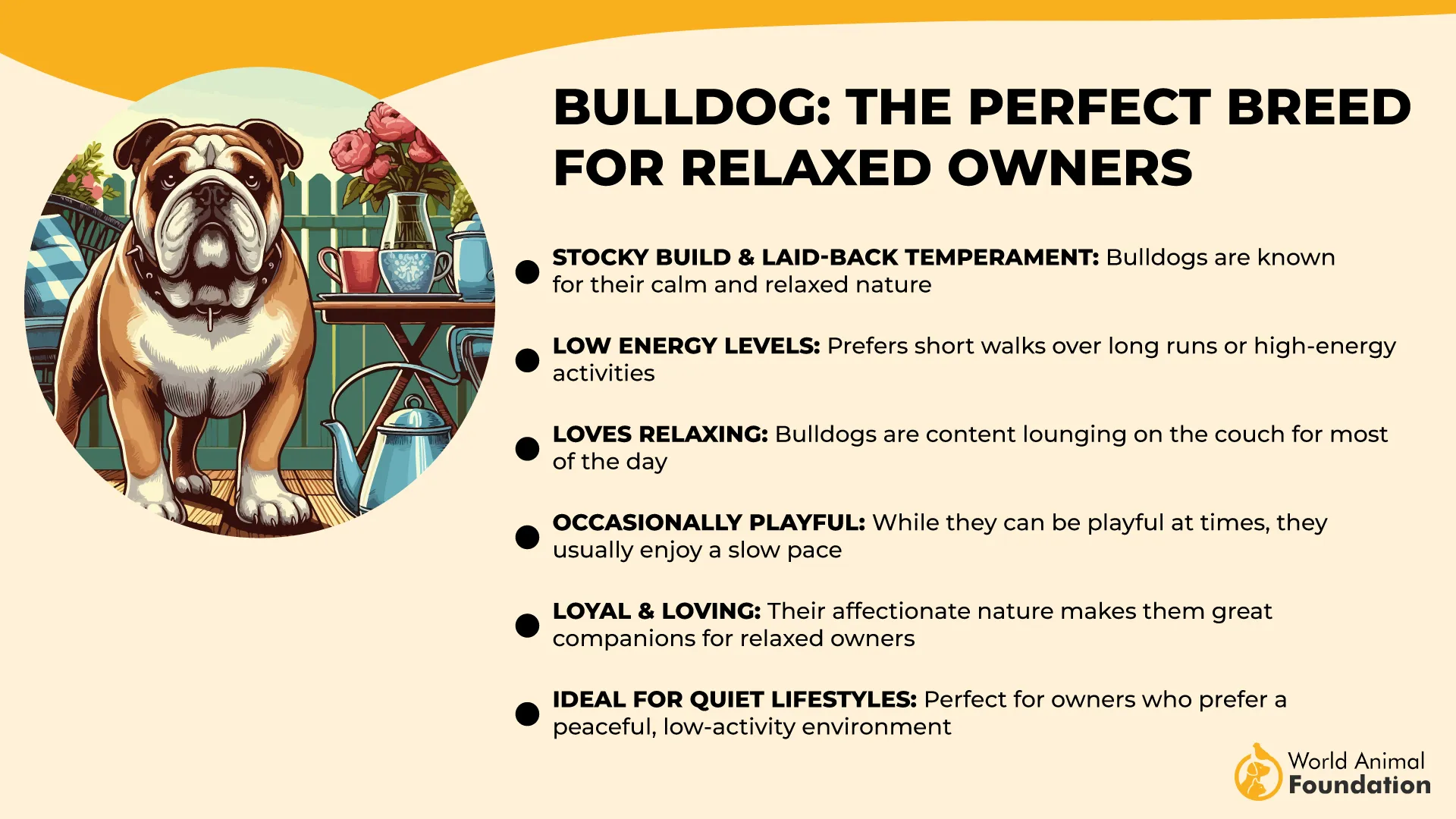
Low-Energy but High-Willpower
They are known for conserving energy, which adds to their refusal to engage unless absolutely necessary. This behavior is more common indoors where they often ignore calls or instructions if they’re not in the mood. It’s an example of quiet but persistent defiance.
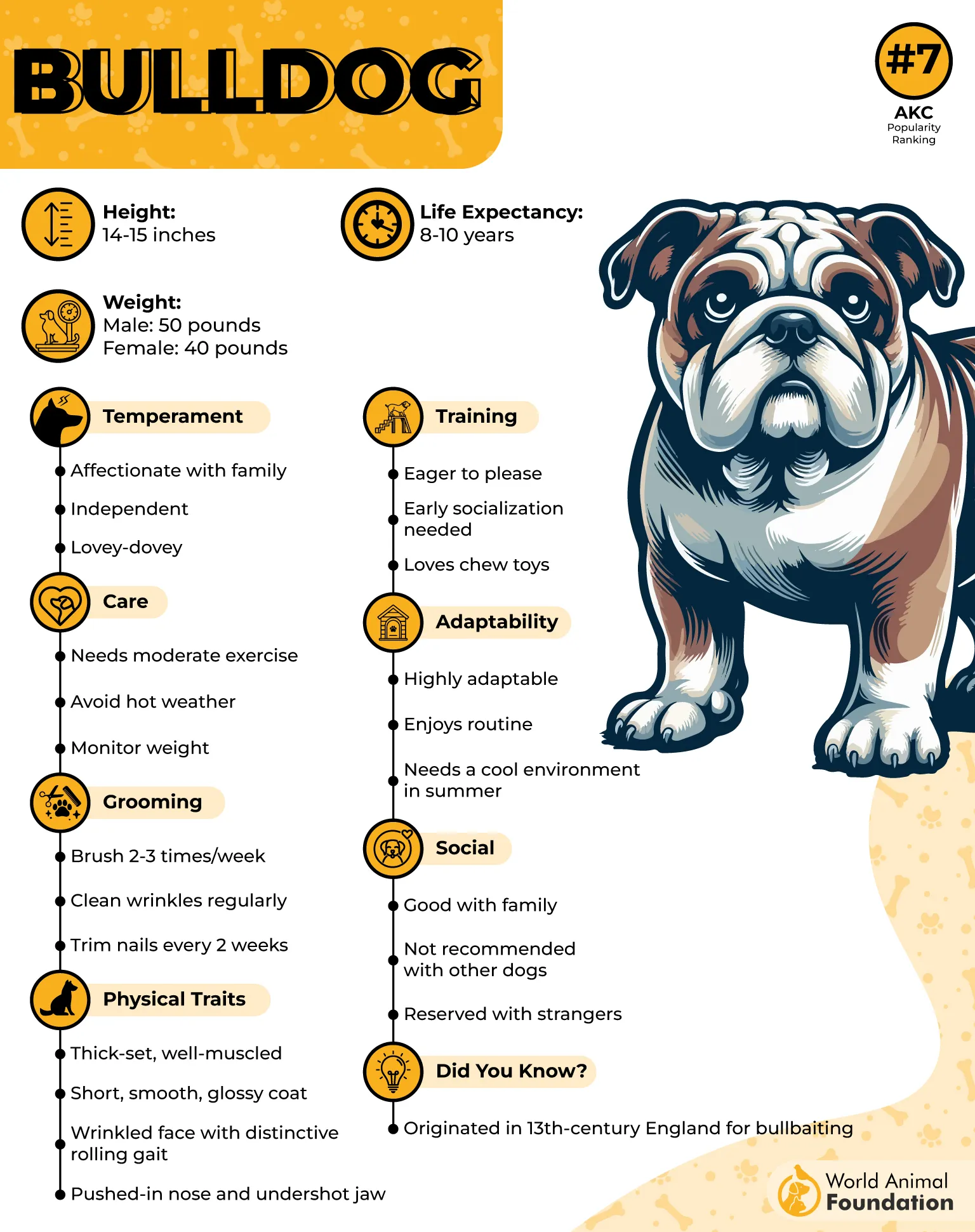
Hardwired for Independence
Historically bred for bull-baiting, Bulldogs carry a deep-seated resilience, as highlighted by the AKC. They respond best to routines and strong leadership rather than frequent corrections. Once they make up their mind, shifting that focus becomes a real challenge.
Handling Them Requires Patience
Owners often need to adjust their expectations during training or transitions. Bulldogs can stare blankly, walk away, or stay frozen when pushed too hard. This strong-willed behavior requires consistent structure more than verbal cues.
10. Dachshund
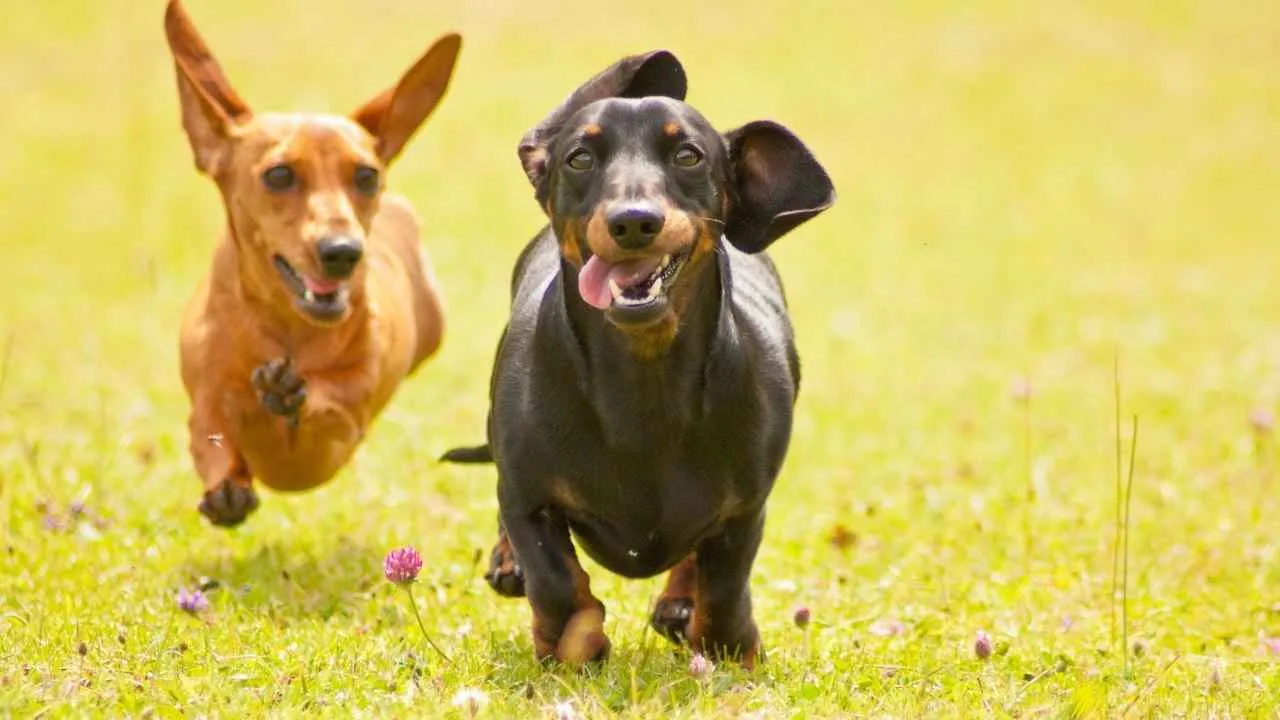
Dachshunds were bred for badger hunting, and that background shows in how determined they are. Once they set their sights on something, they rarely shift focus. It can be a scent, a toy, or simply their preferred route during a walk.
Strong Preferences, Loud Protests
This breed is known for having a sharp opinion on how things should be done. They will resist being carried, redirected, or rushed into anything they didn’t initiate themselves. Vocal protests are common and often timed with dramatic expressions.
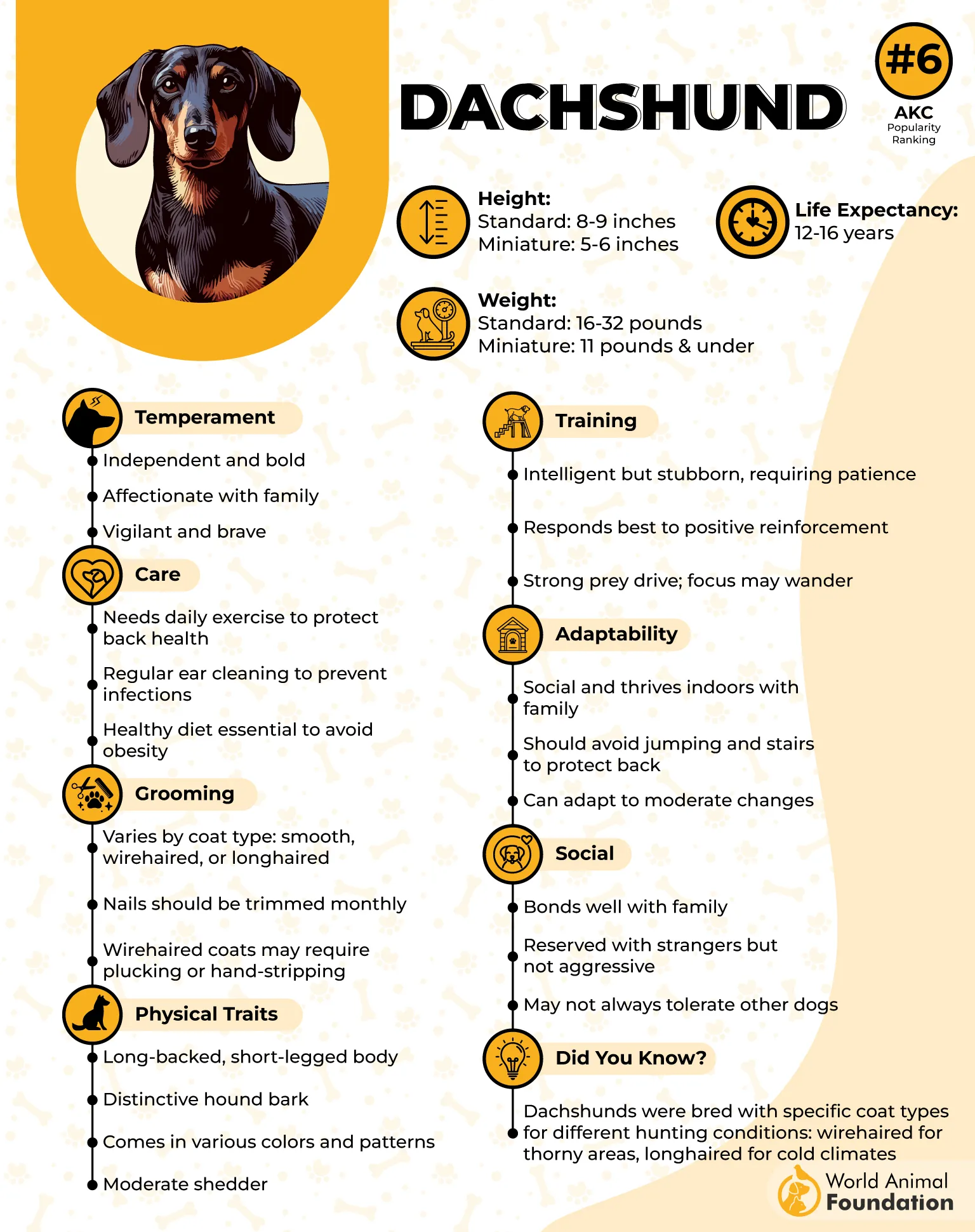
Problem Solvers on Their Own Terms
Dachshunds have a surprising ability to figure things out without help. They’ll dig under fences, nudge open doors, or squeeze into tight spaces to reach what they want. Their creativity makes training a task that requires steady patience.
Sensitive to Control and Correction
They dislike being handled too firmly or interrupted mid-focus. Attempts to force them into a routine often result in flat refusal or clever avoidance. This is a breed that needs cooperation more than commands to stay motivated.
Conclusion
Living with one of the most stubborn dog breeds can feel like a daily negotiation. They’re smart, curious, and incredibly independent. But with patience and positive reinforcement, these dogs can become loyal and thoughtful pets.
Some follow a scent trail without looking back, while others stand still unless they decide it’s worth it. That determination can be frustrating, but it’s also what makes them stand out. You won’t be able to force your way through; you’ll have to teach with trust.
Whether you’re living with a Beagle or a Shiba Inu, these dogs are full of spirit. And if you’re someone who appreciates personality over predictability, you may have just found your perfect match.


